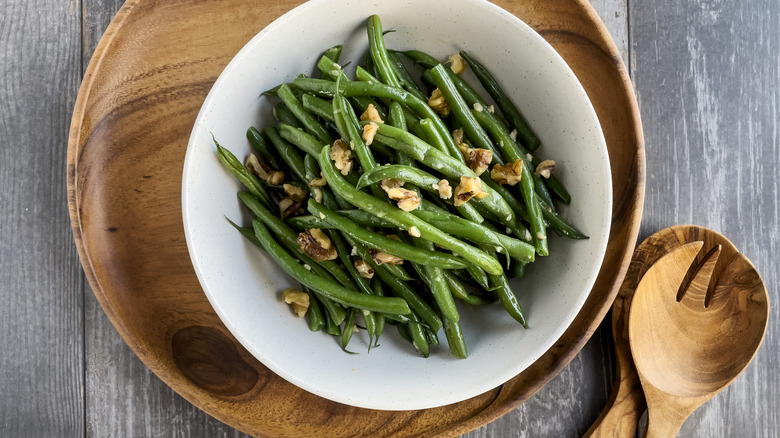
Heart disease is the top cause of death globally, including in the United States. Among various heart disease types, coronary heart disease is the most prevalent. This condition arises when plaque accumulates in the arteries, leading to their narrowing and reduced blood flow to the heart. A complete blockage of blood can result in a heart attack, and similarly, a stroke may occur if blood flow to the brain is disrupted.
Diet significantly influences the prevention of both heart disease and stroke. Consuming heart-healthy foods can reduce major risk factors such as high blood pressure and cholesterol. Vegetables are particularly advantageous for cardiovascular health due to their fiber content, low sodium levels, and rich nutrient profile.
Green beans stand out as a simple and adaptable vegetable to incorporate into meals. A cup of raw green beans offers nearly 3 grams of dietary fiber, which aids digestion and reduces LDL (“bad”) cholesterol levels. They are also naturally low in sodium, and their 211 milligrams of potassium can help regulate blood pressure by counteracting sodium’s effects.
Fiber and potassium in green beans support heart health

Fiber is crucial in a heart-healthy diet, particularly soluble fiber, which plays a significant role in lowering cholesterol. Soluble fiber binds to cholesterol in the digestive system, facilitating its removal from the body. The National Lipid Association suggests consuming at least 5 grams of soluble fiber daily to help decrease cholesterol levels. A cup of cooked green beans offers 1.6 grams of soluble fiber, contributing to this goal. A 2015 meta-analysis published in Clinical Nutrition reveals that higher fiber consumption is linked to a reduced risk of heart disease and a 17% decrease in the risk of death from it.
Green beans also provide nutrients beneficial for managing blood pressure. The DASH (Dietary Approaches to Stop Hypertension) diet encourages increased intake of vegetables, fruits, and whole grains while reducing sodium and saturated fat. It emphasizes the importance of potassium, calcium, and magnesium, three minerals that work synergistically to maintain healthy blood pressure. Though potassium often garners attention, a 2008 article in The Journal of Clinical Hypertension indicates that potassium alone isn’t sufficient. Achieving the right balance of calcium and magnesium is also critical. A cup of green beans adds 37 milligrams of calcium and 25 milligrams of magnesium, helping to control blood pressure.
Healthy ways to cook green beans

The American Heart Association endorses green beans, provided they’re not paired with high-fat foods. While green bean casserole might be a holiday tradition, consider replacing creamy soups and French-fried onions with Greek yogurt or oat milk for a healthier version. Though canned green beans are convenient, they tend to be high in sodium, with a cup containing 460 milligrams, equating to 30% of the American Heart Association’s recommended daily limit for those monitoring blood pressure. Many brands offer low-sodium or no-salt-added options, so it’s worth checking labels.
In addition to dipping fresh green beans in hummus, as suggested by the American Heart Association, there are other healthy ways to enjoy them. Try drizzling olive oil over green beans and roasting them for 15 minutes at 425 degrees Fahrenheit. If it’s too hot to use the oven, sauté green beans in olive oil with sesame seeds and garlic. Avoid boiling green beans, as some nutrients can be lost in the boiling process.




